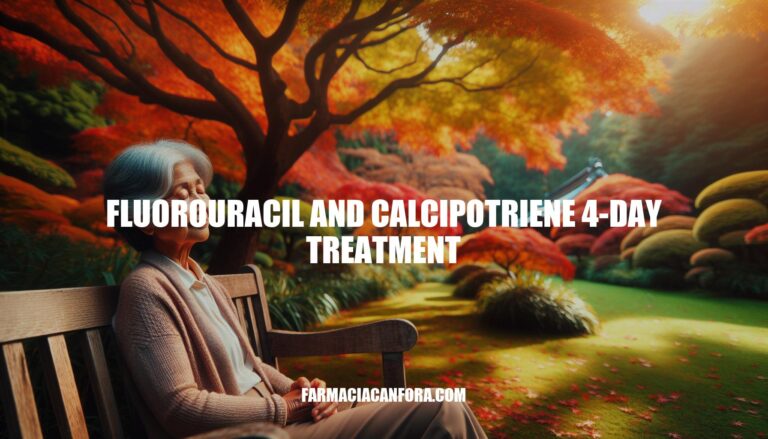


Are you seeking an innovative solution to address solar keratoses and superficial skin cancer? Look no further than the fluorouracil and calcipotriene 4-day treatment. This cutting-edge approach, known as Efucal or FU/Cal in Australia, offers a promising alternative to traditional therapies.
By combining the power of fluorouracil with calcipotriene, this treatment delivers a more efficient and effective way to combat precancerous skin lesions. With a quicker treatment course, reduced irritation, and improved outcomes, this regimen is transforming the landscape of skincare. Discover how this groundbreaking treatment can revolutionize your skin health and rejuvenation.
The 4-day treatment with fluorouracil and calcipotriene is a breakthrough approach for tackling solar keratoses and superficial skin cancer. This combination cream, also known as Efucal or FU/Cal in Australia, offers several advantages over traditional treatments like fluorouracil alone (Efudix). With this treatment, you can expect a shorter course of therapy, reduced inflammation and irritation, and improved overall results.
To use the 4-day treatment, apply the cream twice daily to the affected area, making sure to rub it in gently with your finger. It’s essential to follow the guidance of your doctor regarding application time, as this may vary depending on the location and severity of the solar keratoses. Typically, the face requires a 4-day treatment course.
As you begin the treatment, you might notice some irritation or patchiness on your skin. This is actually a sign that the cream is working to destroy precancerous cells. While it can be uncomfortable, it’s essential to remember that this irritation is usually mild or moderate and should not cause significant pain or discomfort.
During the treatment period, it’s crucial to maintain good sun protection habits, using sunscreen and reapplying as needed. You can also continue with your usual skincare routine, but avoid covering the treated area with dressings unless instructed by your doctor. After the treatment is complete, you may notice a reduction in solar keratoses and smoother skin.
By understanding what to expect from this treatment, you can better prepare yourself for the process and enjoy a more comfortable experience. Remember to follow your doctor’s guidance carefully and seek medical attention if you experience any severe reactions or concerns during or after treatment.
<
In conclusion, the fluorouracil and calcipotriene 4-day treatment emerges as a game-changer in the realm of skincare. With its unique blend of fluorouracil and calcipotriene, this treatment offers unparalleled benefits in managing solar keratoses and superficial skin cancer. Through its short duration, minimized inflammation, and superior results, this regimen provides a beacon of hope for individuals seeking effective solutions.
By following the application guidelines and embracing the temporary discomfort as a sign of progress, you can experience a remarkable transformation in your skin condition. Embrace the power of this innovative treatment to unlock a new chapter in your skincare journey and revel in the radiance of healthier, smoother skin. Trust in the fluorouracil and calcipotriene 4-day treatment to pave the way for a brighter, rejuvenated complexion.